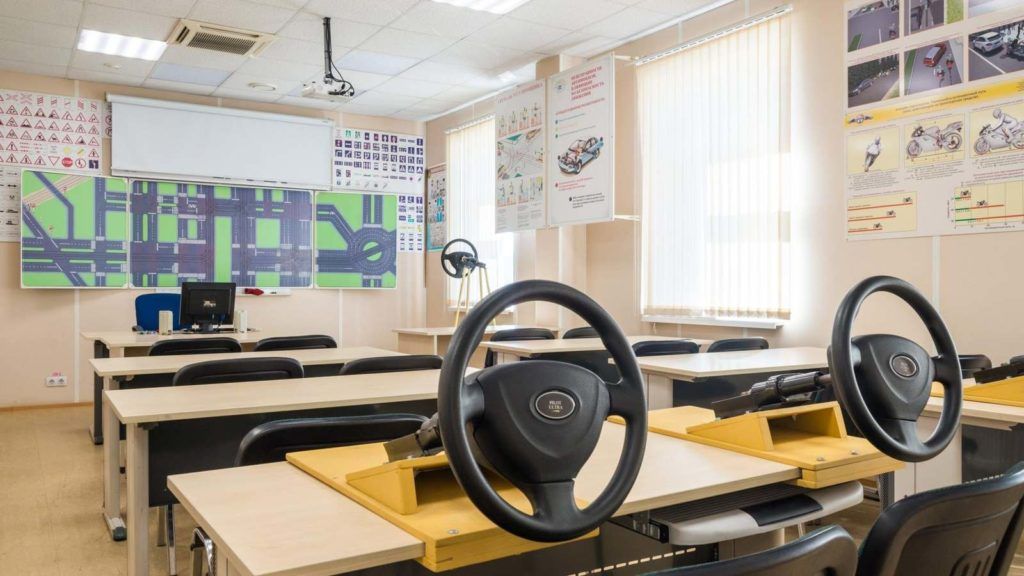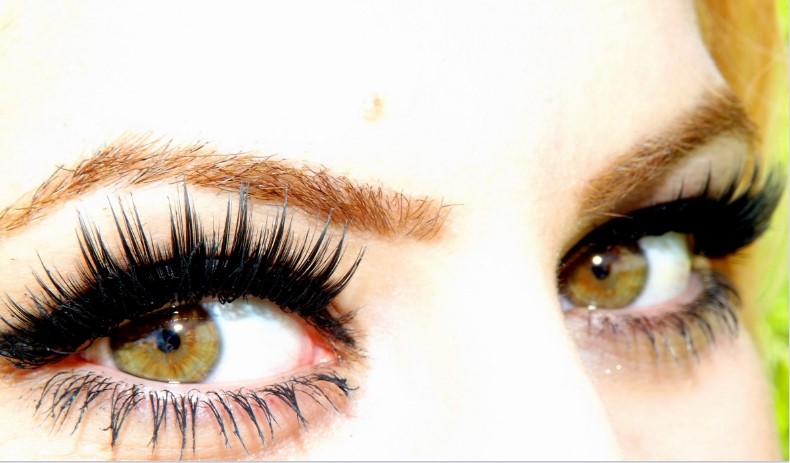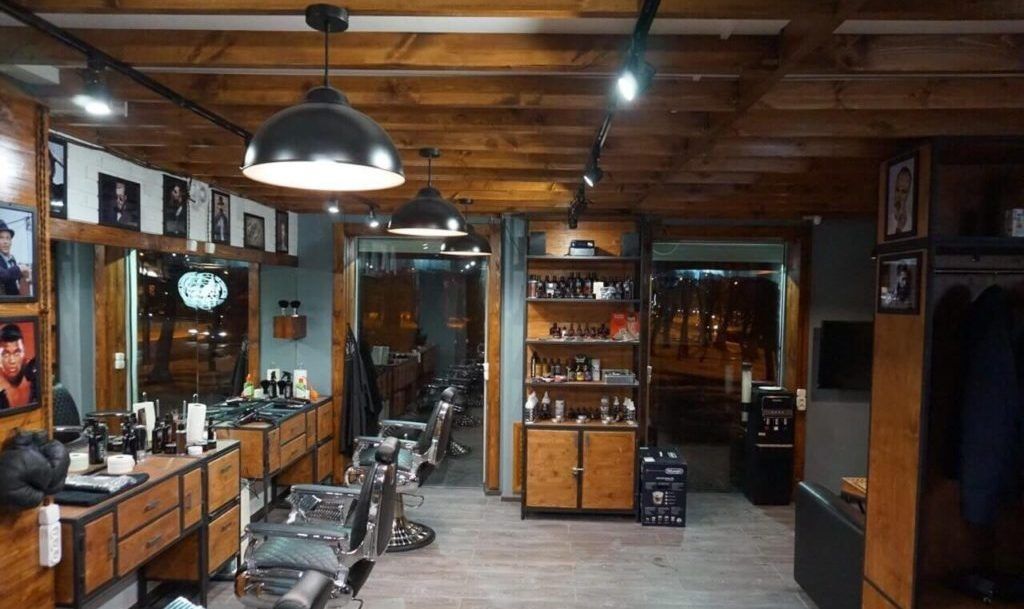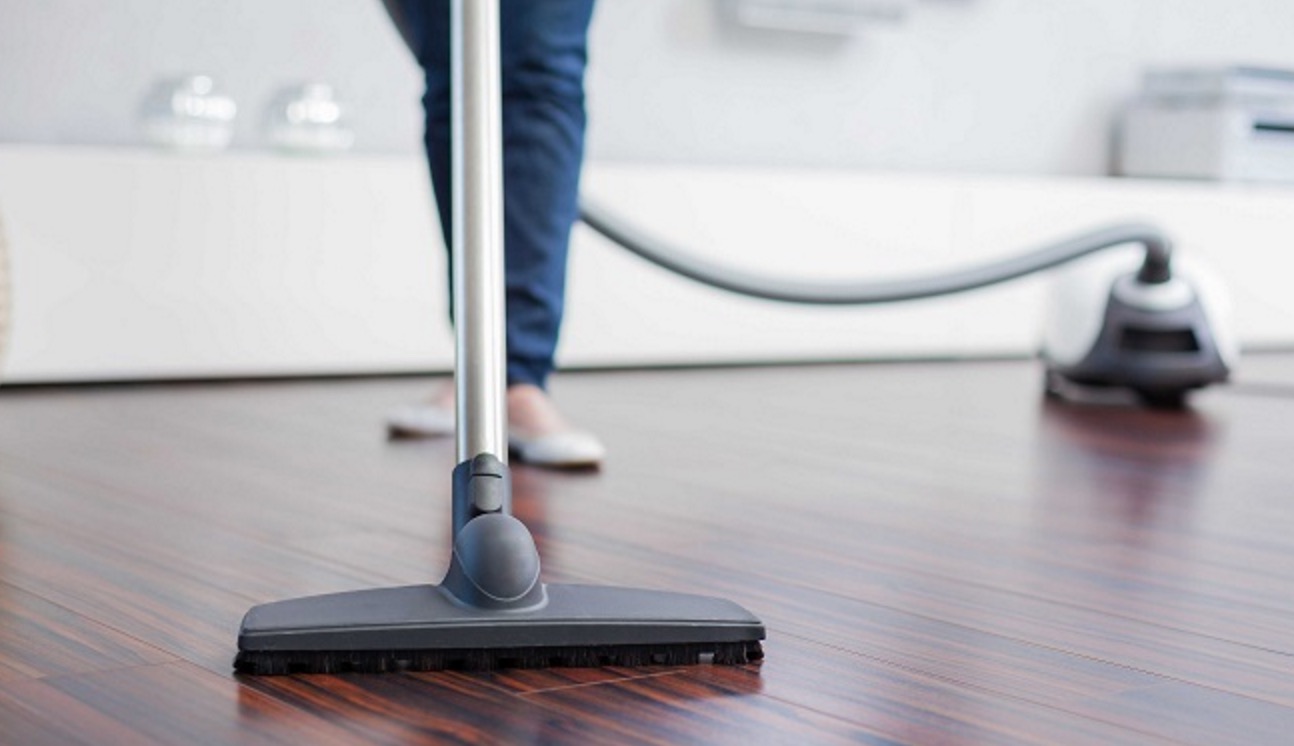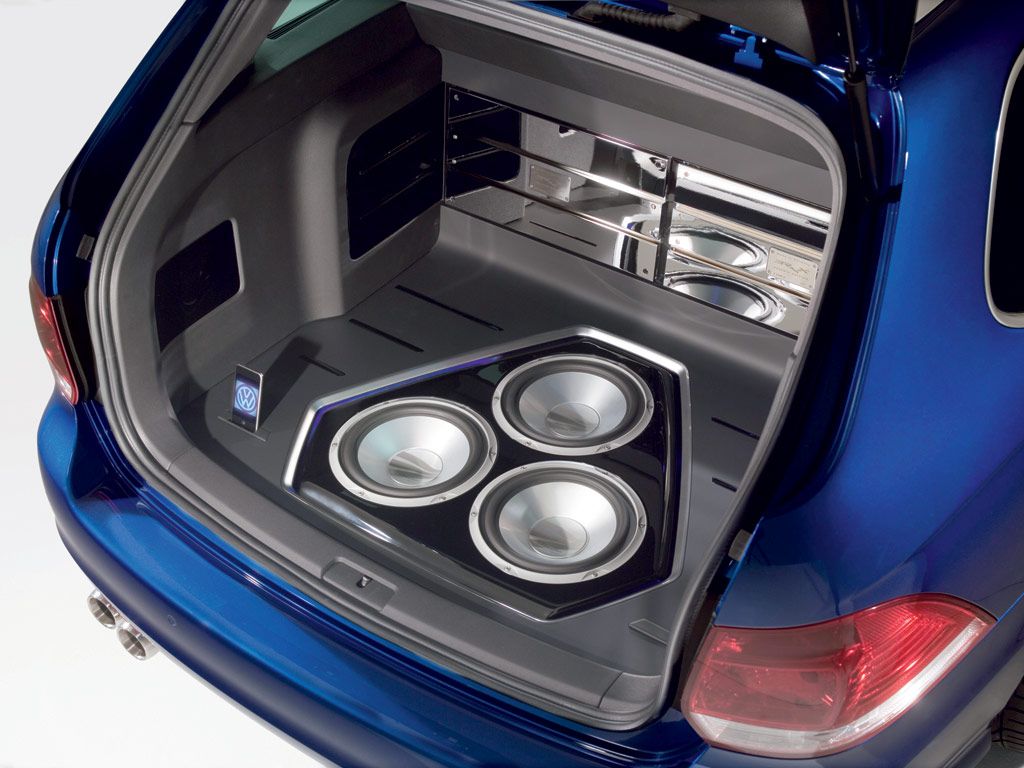Rating of the best floor paints for 2020
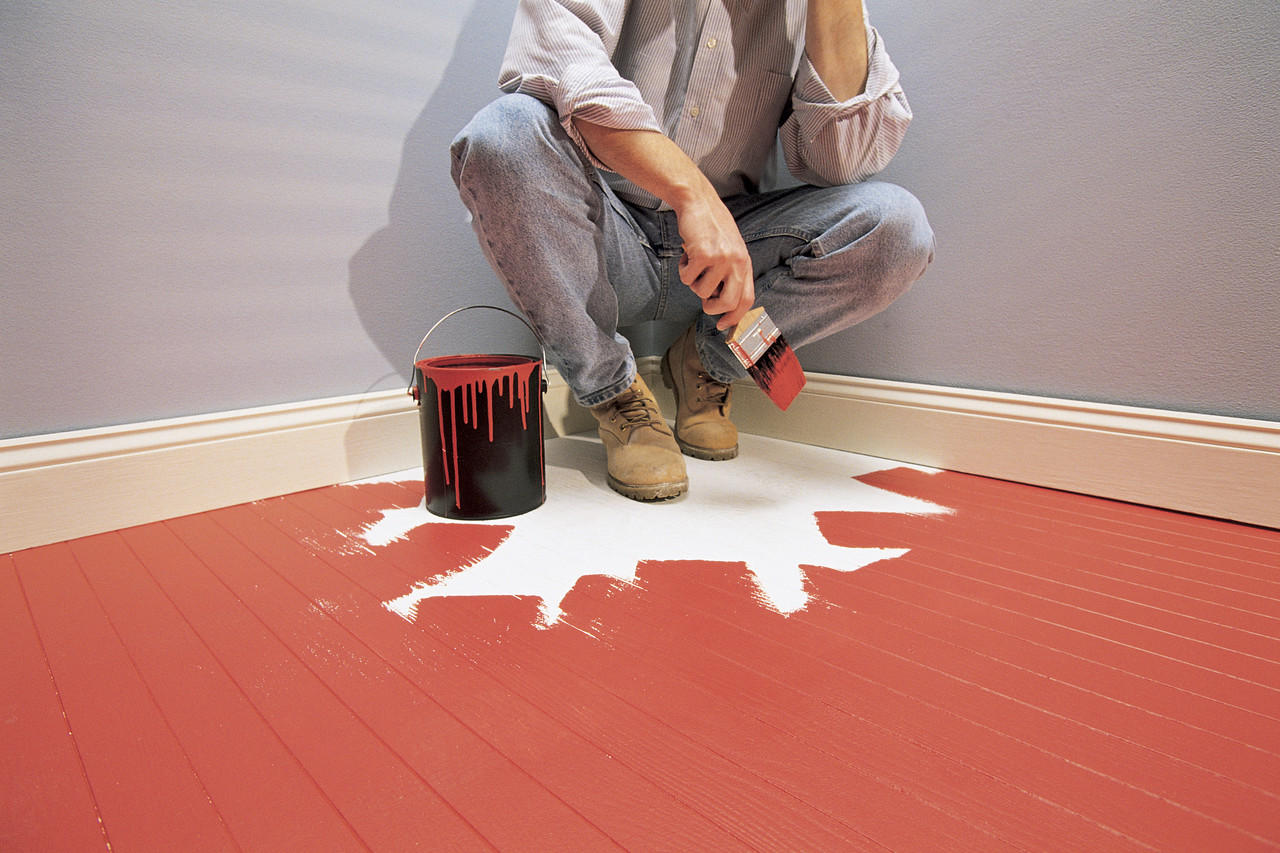
The vast majority of people believe that painting a floor is an extremely simple procedure when making repairs. However, before you start painting, you need to decide on many different factors, such as the need to select a dye with the desired characteristics and its compliance with the material from which the floor is made. The correct choice of paint and varnish material (LKM) will completely affect the final result (the appearance of the future coating and its durability). Today on the market there is a huge amount of various paints and varnishes, which differ in price and characteristics. In order not to get confused in such a variety, it is necessary to gain basic knowledge about each type of paint and the nuances that arise during its application.
Existing paints for wood floors
The current reality is that most often only wooden floors have to be painted, and for other bases (concrete, metal) it is customary to use other materials (engineering board), although not in all cases. Nevertheless, wood flooring has long been a sought-after and popular element in any room, from residential to formal. This was due to its environmental friendliness, aesthetic appearance, relative cheapness and safety, along with a good heat preservation function. To preserve all its positive properties, you just need to choose the right paint for it.
IMPORTANT! It should always be remembered that not all wood paint will work on all floors. Much will depend on where the floor is located, at what temperatures it will be used, what type of wood it is made of, as well as the intensity of the impact of external factors on it (from the load of human chilling to interaction with natural phenomena).
Acrylic paints
This dye is the most popular for its versatility. It contains a sufficient amount of moisture and special acrylic-based resins. This material can be used to cover not only the floor, but also other surfaces, such as external walls or the facade of a house. The staining procedure can be carried out with a roller, brush or spray gun. The use of the latter tool is even preferable, since.the consumption of the mixture per square meter of the painted surface will be noticeably reduced, and this means financial savings. This factor is quite significant if you remember that acrylic paintwork materials are quite expensive. At the same time, some types of wood (for example, soft ash and birch) may require the application of several layers of the material, since their structure absorbs paint very well. In any case, multi-layering for any type of wood will only mean an increase in the service life of the floor (if there is no question of achieving some special appearance, for example, “antique” styling).
Acrylic coatings have the following undoubted advantages:
- There is practically no toxicity property in them - these materials are equally safe when painting the floor and with its further use;
- They are absolutely odorless, which is important for people with allergies and young children (when work is carried out in places of their permanent residence);
- Their special fire resistance is achieved due to being in the composition of water;
- Moisture resistance and heat resistance allow their use in special rooms with high temperatures and humidity (baths, kitchens);
- These materials can be easily washed without fear of damage to the coating;
- Resists low temperatures well;
- Their application is easy, drying takes place in a very short time;
- The paint can be easily removed from the surface with warm water and a sponge - the main thing is not to let it dry out;
- The assortment of acrylic paintwork materials is very, very wide, there are many different shades;
- Additional ingredients will increase the dye's UV resistance.
All of the above qualities make acrylic base the most popular among flooring materials.
Alkyd paints
The composition of this material is almost similar to the above-described acrylic with one exception - the resins present in it are more focused on creating a glossy surface. Its significant "pluses" include:
- Almost instant drying of the treated floor surface;
- If paintwork materials are used in rooms with high humidity, then the composition will reliably protect the wood base from decomposition;
- Due to the excellent penetration of the composition into the structure of the tree, a long service life is ensured;
- Special ingredients of this material successfully fight mold and mildew;
- Fresh and bright shades prevail among the available color range;
- It successfully resists aggressive weather events (rain, snow, hail, etc.).
However, unlike acrylic paints and varnishes, alkyd ones have some "disadvantages":
- They have an unpleasant and pungent odor, which, in principle, quietly disappears (but not quickly);
- They interact poorly with some chemically active substances (solvent, acids and alkalis); in close contact, the paint layer may be destroyed;
- The mixture is flammable.
Nevertheless, it is not worth discarding alkyds right away - they are quite suitable for use in closed rooms with an average throughput.
Polyurethane enamel
Quite a whimsical material, because only well-prepared surfaces can be painted with it. If you apply such enamel to a damp base, then after drying, cracks will appear on the coating, and the paint may "go in bubbles".
However, if the floor base is prepared according to all the rules, then polyurethane will perfectly protect it from rapid aging, prevent premature wear of the tree, and help avoid decay processes. It is preferable to use polyurethane enamel in rooms with high traffic load. A significant disadvantage of the material is extreme toxicity (when painting, you must use a respirator mask).
Oil paints
At one time, they were very popular in the vastness of the Soviet Union due to the fact that there were simply no other options.Currently, they are not relevant, since they lose to modern mixtures in terms of drying speed (for oil ones, at least one day), the quality of penetration into wood, the presence of an unpleasant (albeit weathered) smell. However, a high degree of protection of the floor covering from mechanical damage and a low susceptibility to temperature extremes remain positive properties.
Epoxy paints
They are obtained by mixing two substances - directly the epoxy resin itself and the dye of the desired color. The possibility of self-tinting is the main feature of these paints. Also, they are characterized by resistance to abrasion, durability of service, special resistance to weather events (precipitation) and even to some chemically aggressive substances. They are perfectly absorbed into the concrete surface and resist fading of the painted layer in direct sunlight. However, the range of colorants that can be added to the mixture is extremely limited. Therefore, it will be difficult to choose a similar color, if the need for repainting arises.

Rubber paints (latex)
This species can be called relatively new. It gained its own popularity due to the fact that it can be used to paint almost any surface: from wood and plastic to metal and concrete. The material is weakly susceptible to aggressive liquids and ultraviolet light, has a special elasticity, is resistant to mechanical damage, and successfully resists peeling. Separately, it is worth mentioning the efficiency of application - the mixture is consumed very little. Many users consider this paint to be the best in terms of price / quality ratio.
Features of painting wooden floors
The above paints can be used to treat wood flooring, but a specific choice should only be made based on the following parameters:
- The kind of wood from which the floor is made;
- The intensity of the load on the flooring (the number of people walking per day);
- Do you need further refurbishment, restoration or preventive treatment with protective compounds;
- Average humidity level, constantly kept indoors;
- Estimated maximum service life.
Preparing the floor for painting
First of all, you need to make sure the surface is clean. If there is a previous coating, then it must be removed, however, this step is only necessary for some types of paintwork, for example, especially outdated ones - oil or epoxy. Experts recommend preparing the floor in the following steps:
- A special protective oil is applied to the surface, which the future painted surface will absorb for about 72 hours (this step is optional for some types of dyes, but in any case it will never be superfluous);
- After the protective layer has dried, the first paint layer is applied with a roller, spray gun or brush and remains to dry for at least a day (the time can be adjusted depending on the drying properties of a particular type of paintwork, however, the longer, the better);
- The final step is to coat the surface with paint in a thickness of one to five layers (again, depending on the type of paint).
If the flooring has significant defects, then before starting painting you will need:
- Fill up any large gaps with a putty and sand the repair area with sandpaper. In the future, it is advisable to cover the repaired area in two or three layers.
- If painting is carried out on top of the old layer, then after completing all procedures, it is better to protect the renewed surface with a special varnish. In the absence of it, ordinary oil paint with a glossy effect is suitable for wood.
Optimum consumption of dye
Professionals agree that for almost any type of paint, one square meter of area requires from two hundred to four hundred grams of dye.It should be mentioned here that the consumption when working with a spray gun or roller will be lower, while when working with a brush, the consumption will increase.
Features of the care of painted wooden floor
There are a number of simple rules, thanks to which a painted wooden floor will last much longer:
- Three - four times a week you need to carry out wet cleaning and wash the floor with a wet rag;
- If stains from oily liquids have formed on the surface, then it is possible to remove them with the help of ammonia;
- If you want to increase the glossiness of the floor, then it can be rubbed with vegetable oil. The main thing is to wipe everything dry afterwards in order to exclude slippage;
- If cracks have formed in the coating and dust and small particles of dirt get there, then they must be removed with a vacuum cleaner.
IMPORTANT! It is always necessary to remember what kind of paint the floor is painted with. If the dye does not interact well with chemically aggressive substances, then it should not be washed with household chemicals. This can damage the paintwork!
Concrete floor and special paints for it
Typically, a concrete base is used in rooms where there is a significant load on the use of the floor covering. The use of water-based paint under such conditions is extremely inappropriate - in this case, alkyd or oil paints and some special-purpose mixtures are perfect. They just have all the necessary properties:
- They have increased wear resistance;
- They penetrate well into the structure of concrete, enhancing its protection;
- Perfectly interact with aggressive media and substances (from weather precipitation to household detergents);
- Often they do not require a complete leveling of the surface before painting.
Concrete painting may be required for floors located:
- On open air;
- In large hangar-type rooms;
- In rooms that are characterized by temperature changes.

In any case, the process of painting a concrete floor is much less laborious than for a wooden floor, therefore, it can be performed with some deviations from standard technologies.
Rating of the best floor paints for 2020
Acrylic
2nd place: Tikkurila Yki
Not a bad sample from the world famous Finnish manufacturer. It is highly resistant to external influences, can be used as a restorative material for sealing small cracks, and can be tinted. Drying time is minimized - no more than 50 minutes.
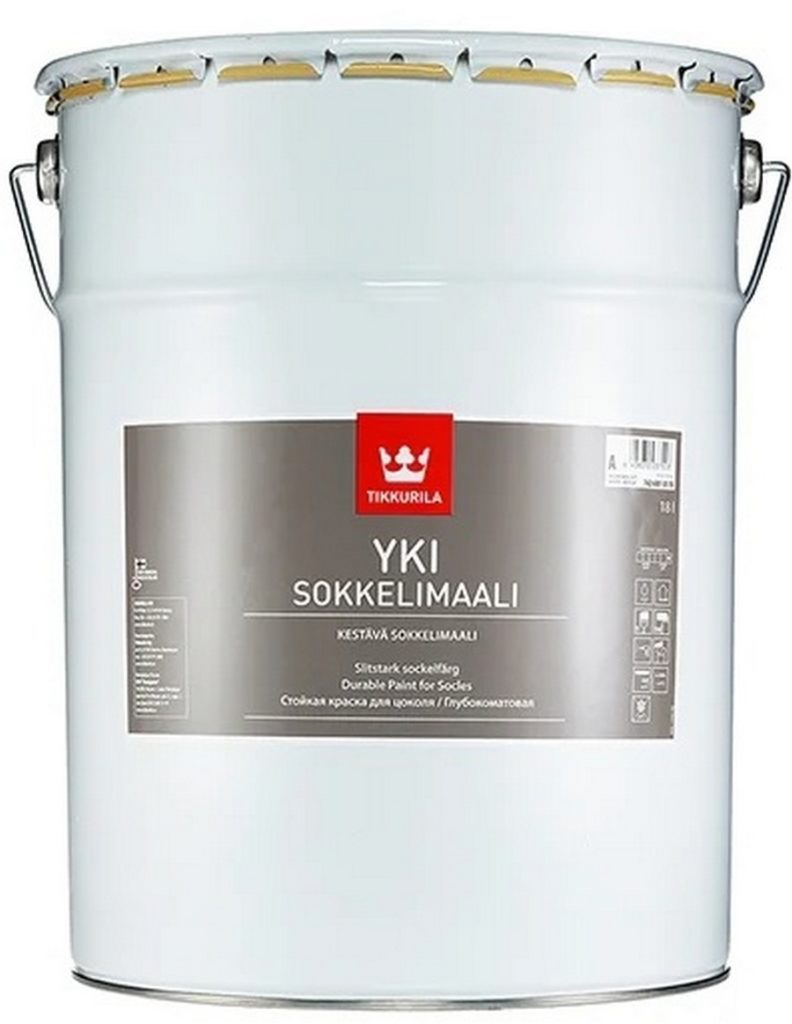
| Name | Index |
|---|---|
| Manufacturer country | Finland |
| Color base | Acrylic |
| Packing size, liters / kilograms | 2.7 |
| Cost, rubles | 2200 |
- Minimum consumption;
- Improved heat resistance;
- Application variability (brush, roller, spray gun).
- Narrow specialization (only for concrete).
1st place: Aquastrong (gray)
This dye is equally well applied both to wood and plastic, as well as to concrete and metal. It is characterized by a high level of strength at the end of drying, is able to qualitatively prevent the access of moisture to the painted surface. The composition additionally implements the function of counteracting the formation of dust under the protective layer.

| Name | Index |
|---|---|
| Manufacturer country | Russia |
| Color base | Acrylic |
| Packing size, liters / kilograms | 6 |
| Cost, rubles | 3100 |
- Odorless;
- Resistant to chemicals and gasoline;
- Can be used at low temperatures.
- Not found.
Alkyd
2nd place: Dulux Domus (semi-gloss)
One of the most popular domestic-made paint mixtures, directly positioned on the market as paintwork materials for painting all types of wooden surfaces. It has good protection against adverse weather conditions, for the floor it is able to maintain a high load intensity. The price is relevant for the declared properties and the volume of sales containers.
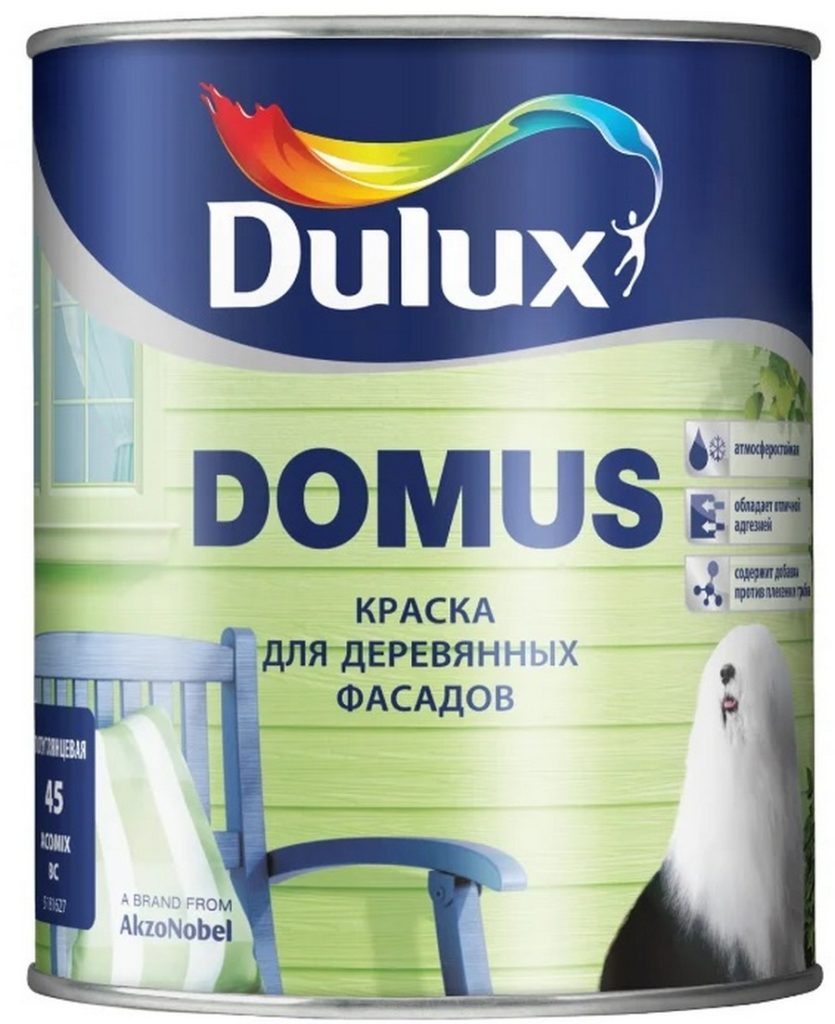
| Name | Index |
|---|---|
| Manufacturer country | Russia |
| Color base | Alcides |
| Packing size, liters / kilograms | 1 |
| Cost, rubles | 1100 |
- Possibility of tinting;
- Variability of the application tool;
- Good dye base.
- Long drying time - at least 2 days
1st place: TEKNOS Kirjo (semi-matt)
This dye is specially designed for use on metal substrates. Designed mainly for industrial premises. Possesses a high degree of adhesion (adhesion) and prevents the appearance of corrosion on the treated surface.

| Name | Index |
|---|---|
| Manufacturer country | Finland |
| Color base | Alcides |
| Packing size, liters / kilograms | 1 |
| Cost, rubles | 1200 |
- Excellent adhesion;
- Protects against corrosion;
- There is a possibility of tinting.
- Large consumption per square meter.
Latex (rubber)
2nd place: MasterGood (dark green) RAL 6005
An excellent dye for hard substrates (concrete, reinforced concrete, brick). Can be used as a restoration agent (it is convenient to repair small cracks). Has a fast drying period for each layer (2-4 hours), with the required application of at least three layers. Contains antiseptic ingredients.

| Name | Index |
|---|---|
| Manufacturer country | Russia |
| Color base | Latex |
| Packing size, liters / kilograms | 2.4 |
| Cost, rubles | 2500 |
- Antiseptics in the coloring composition;
- Fast drying;
- Large packaging container.
- Tinting is only possible by machine.
1st place: DALI (terracotta)
A universal paint, which has earned popularity among buyers due to its versatility - it works great on both concrete and wood. Good adhesion with special wood bases - MDF, chipboard, fiberboard, OSB is especially noted. It is applied in two layers, the drying period between which does not take even two hours.

| Name | Index |
|---|---|
| Manufacturer country | Russia |
| Color base | Latex |
| Packing size, liters / kilograms | 12 |
| Cost, rubles | 2900 |
- Extra-large packaging option (12 liters);
- Adequate price;
- Multifunctionality.
- Requires renewal every two years.
Oil
2nd place: Brosex MA-14 (white)
The standard sample comes from the last century. It has all the properties necessary for an oil composition - it protects the tree well, is applied only with a brush, has an unpleasant odor. It is not subject to tinting, but it has a wide range of colors.
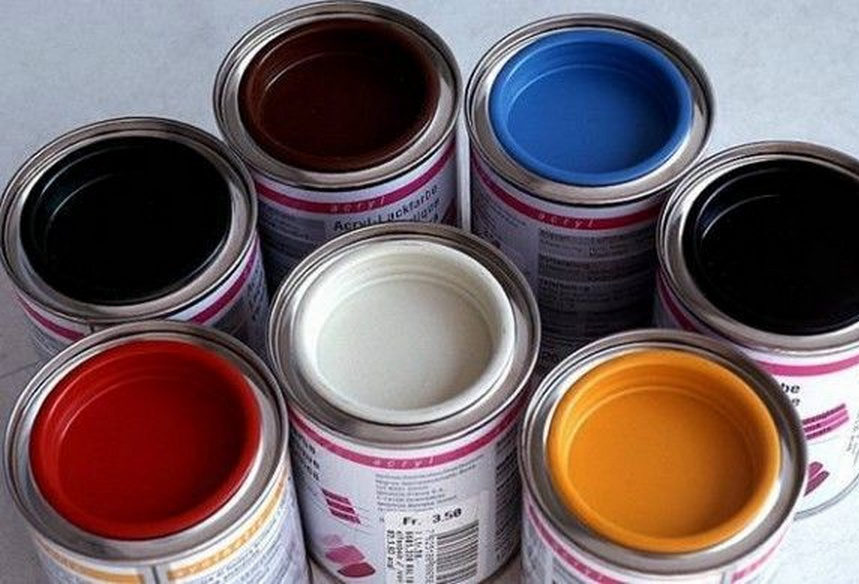
| Name | Index |
|---|---|
| Manufacturer country | Russia |
| Color base | Oil |
| Packing size, liters / kilograms | 2.5 |
| Cost, rubles | 250 |
- Good protection for wood base;
- It divorces well with water;
- The smell disappears relatively quickly;
- Extremely budget price.
- May melt when exposed to direct sunlight.
1st place: Lacra (light green) MA-15
The dye is specially designed for surfaces exposed to the weather (wooden roof, wooden porch, various gazebos). Has an extended shelf life - about 1.5 years after opening the container. Diluted with white spirit. It tolerates low temperatures well.
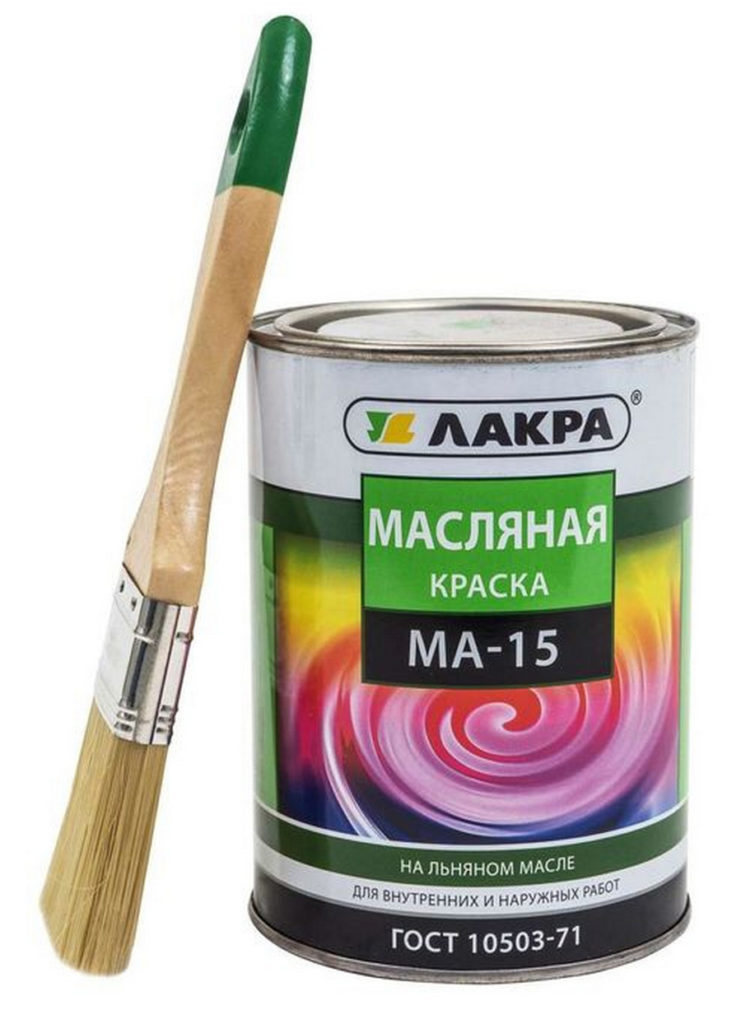
| Name | Index |
|---|---|
| Manufacturer country | Russia |
| Color base | Oil |
| Packing size, liters / kilograms | 0.9 |
| Cost, rubles | 180 |
- Affordable price;
- Ease of application;
- Resistance to low temperatures.
- Ability to work only with a brush;
- Small packaging container.
Polyurethane
2nd place: Enamel "Monourethane"
The enamel is specially designed for coating thin-layer polymer floors in civil and industrial facilities. According to the method of application, it is rather decorative. However, it can be used as a fixing layer to protect the previous one.
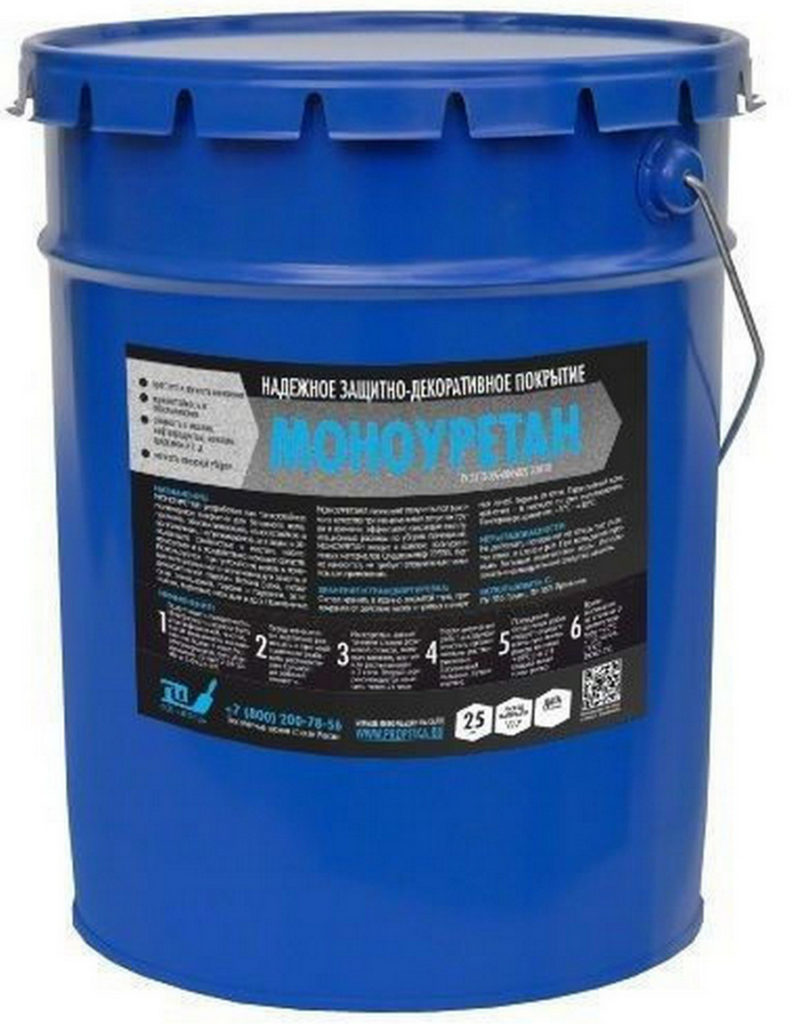
| Name | Index |
|---|---|
| Manufacturer country | Russia |
| Color base | Polyurethane |
| Packing size, liters / kilograms | 2.5 |
| Cost, rubles | 280 |
- Large volume of sales containers;
- Ease of overlay;
- Use as a decorating and fixing layer.
- Narrow specialization.
1st place: Soframap Berco Sol
An excellent sample of a dye from a Bulgarian manufacturer. It can be used as a main layer on a concrete floor, and as an additional layer on a wooden floor. Tinting is possible both manually and automatically. The special production technology of the composition allows you to reduce the porosity of the treated base, which will simplify its maintenance.
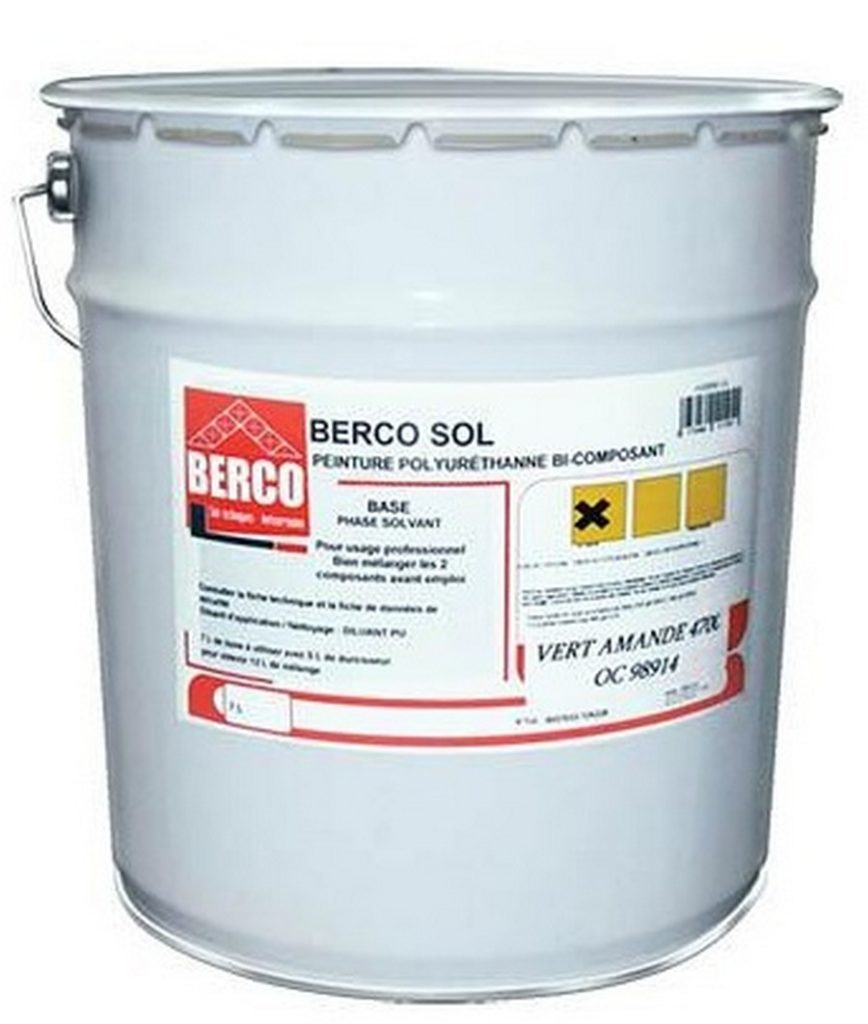
| Name | Index |
|---|---|
| Manufacturer country | Bulgaria |
| Color base | Polyurethane |
| Packing size, liters / kilograms | 1 |
| Cost, rubles | 2500 |
- Expanded functionality;
- Has variability of application;
- All types of tinting are possible.
- High price for small volumes.
Epoxy
2nd place: "Epstone-Ultra" (gloss)
In its structure, this enamel contains suspensions of pigments and mineral fillers, which are specially responsible for resisting cracking of the painted base. Has a relatively short drying time, can be used as a recoat to an existing paint.

| Name | Index |
|---|---|
| Manufacturer country | Russia |
| Color base | Epoxy resin |
| Packing size, liters / kilograms | 5 |
| Cost, rubles | 2000 |
- Complies with all Russian GOSTs;
- Fast drying;
- Actual price.
- Not found (in its segment).
1st place: MasterPol EP-1 (hybrid)
This paintwork material has two components in its structure - epoxy resin and acrylic, which significantly expands its capabilities. It is designed exclusively to prevent floor wear in industrial premises, including when exposed to intense traffic loads. At the same time it can serve as a repair material.
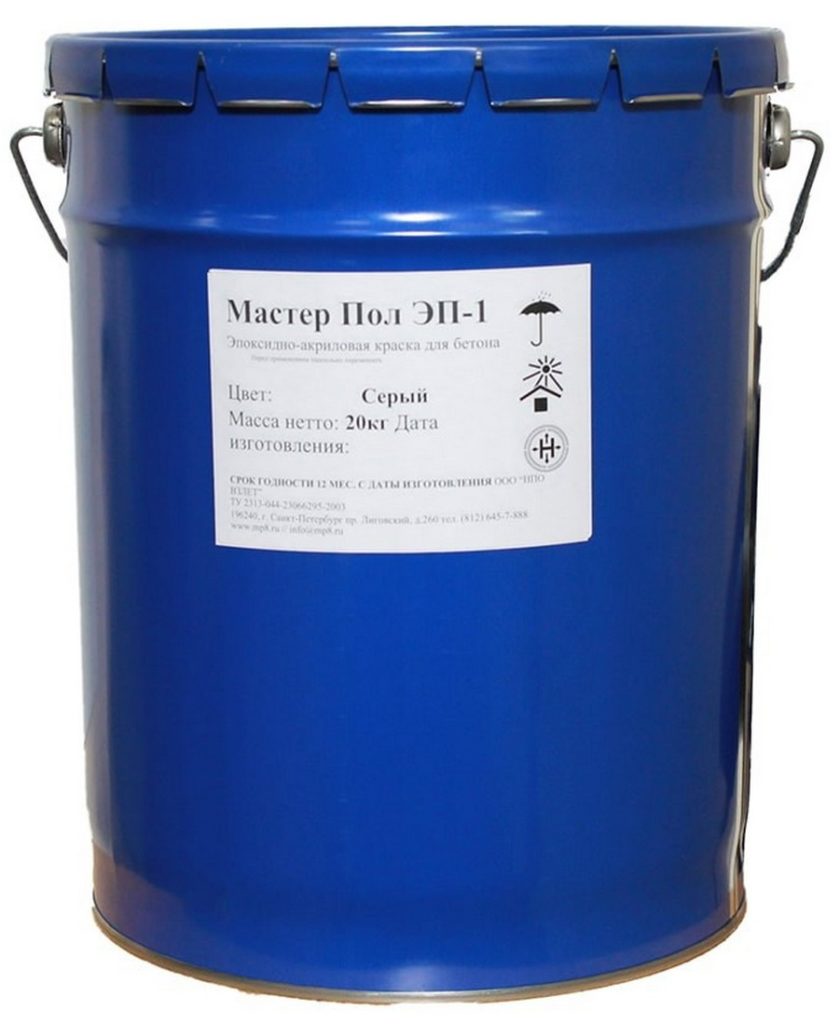
| Name | Index |
|---|---|
| Manufacturer country | Russia |
| Color base | Epoxy resin + Acrylic |
| Packing size, liters / kilograms | 10 |
| Cost, rubles | 6000 |
- Extended functionality;
- Excellent value for money;
- It is used in unheated rooms.
- Quite a long drying period between layers - 6 hours.
Instead of an epilogue
The analysis of the market showed that floor paints of Russian origin are very popular among consumers. Expensive foreign brands do not receive the necessary response in the hearts of customers precisely because of the cheapness of their counterparts made in the Russian Federation. Nevertheless, if it is necessary to purchase large volumes, it would be more expedient to make a purchase on a proven Internet site - it is so easy to save on the difference with the retail price.
new entries
Categories
Useful
Popular articles
-

Top rating of the best and inexpensive scooters up to 50 cubic meters in 2020
Views: 97661 -

Rating of the best materials for noise insulation for an apartment in 2020
Views: 95022 -

Rating of cheap analogues of expensive medicines for flu and colds for 2020
Views: 91751 -

The best men's running shoes in 2020
Views: 87681 -

Top ranking of the best smartwatches 2020 - price-quality
Views: 85091 -

Best Complex Vitamins in 2020
Views: 84801 -

The best dye for gray hair - 2020 top ranking
Views: 82406 -

Rating of the best wood paints for interior use in 2020
Views: 77202 -

Ranking of the best action cameras from China in 2020
Views: 75269 -

Rating of the best spinning reels in 2020
Views: 74827 -

The most effective calcium supplements for adults and children in 2020
Views: 72462 -

Top rating of the best means for male potency in 2020 with a description
Views: 68296
